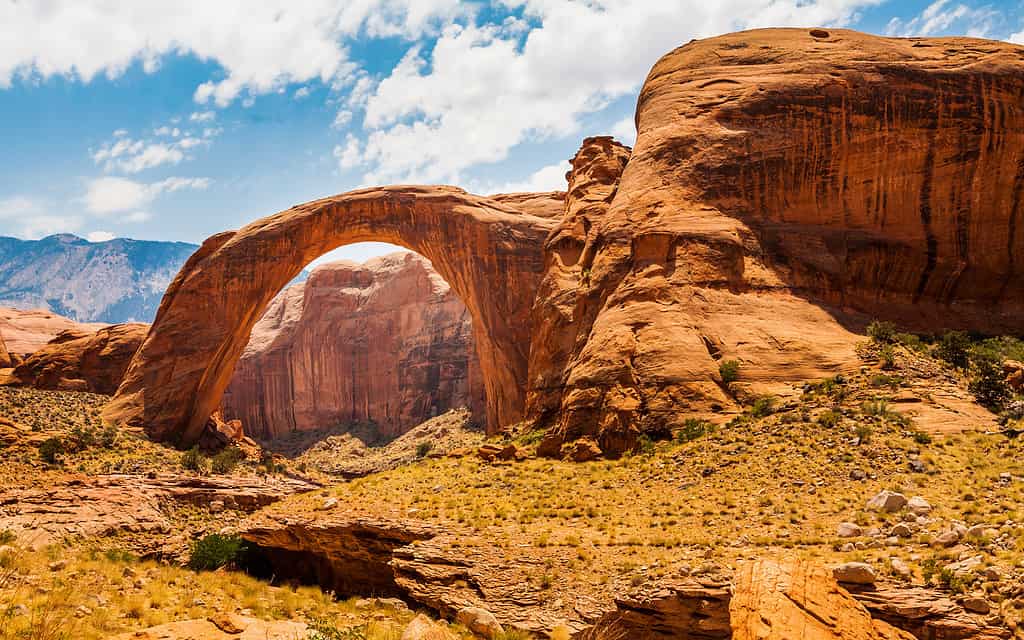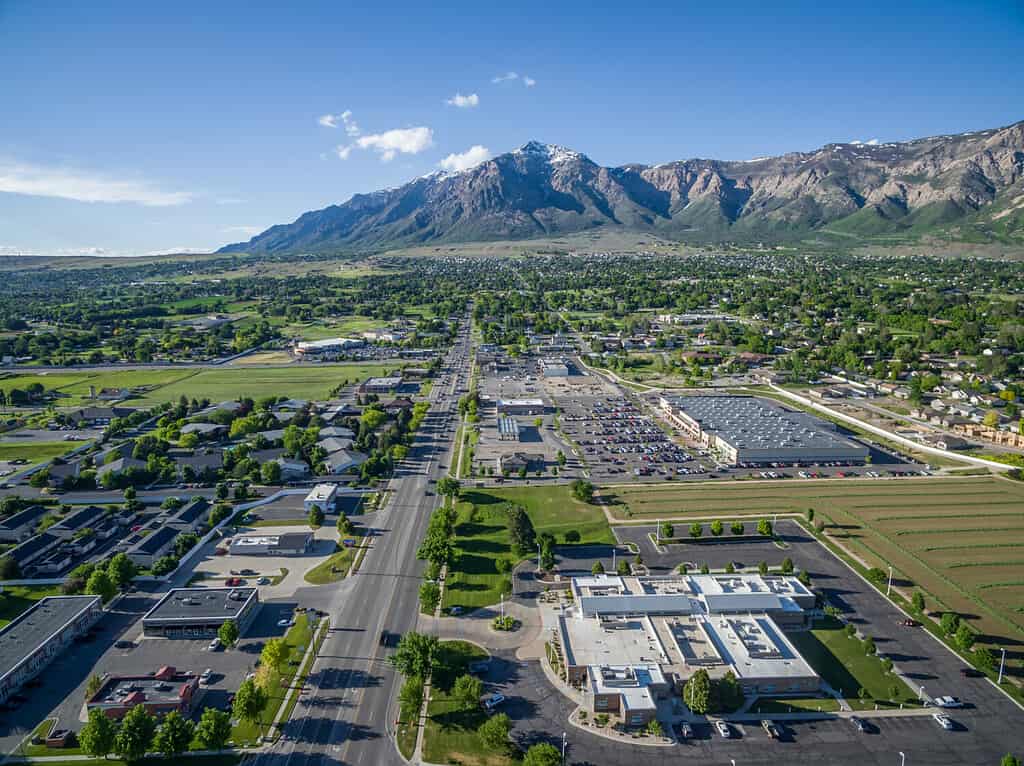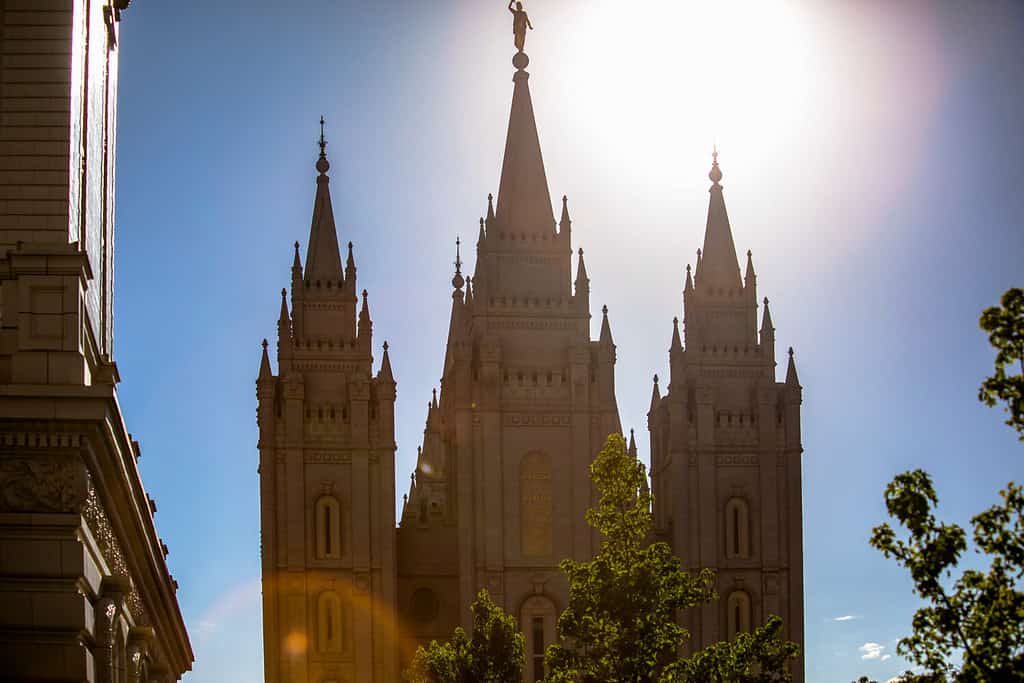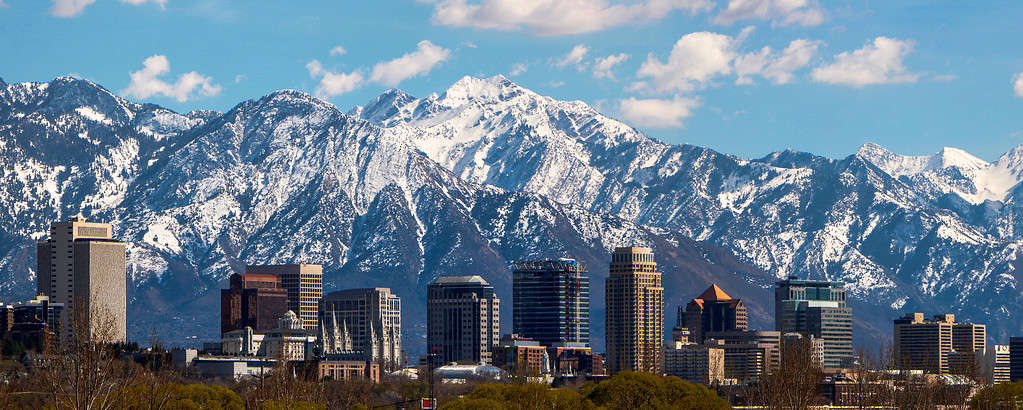Utah has one of the most unique histories of any state in the United States. Founded mainly by settlers from the Church of Jesus Christ of Latter-day Saints (Mormons), Utah’s culture is one of independence, faith, and hard work to make the desert bloom. It has some of the finest natural scenery anywhere in the West, and the Great Salt Lake is a unique body of water. Go with us now on an exploration of some of the oldest cities in Utah and take a taste of the history and culture of this remarkable state and its people.

The deserts of Utah have some of the most fantastic geological formations anywhere in the country.
©iStock.com/Alysta

1. Ogden, 1845 (population 87,321)
Ogden’s founding dates back to the establishment of a small fort in 1845 by Miles Goodyear, a mountain man working in northern Utah. He sold his claim two years later to Mormon settlers for about $3,000. The growth of the settlement benefited from the transcontinental railroad. Near Ogden is Promontory Summit, where in 1868 a golden spike was driven to mark the joining of the eastern and western branches of the railroad, linking the continent coast-to-coast. The city promoted itself with the slogan, “You can’t get anywhere without coming to Ogden.” All this traffic brought problems as well. Ogden developed such a reputation for gambling, prostitution, drugs, robberies, and murders that the infamous gangster Al Capone once said that Ogden was too wild even for him! On the more wholesome side, Ogden was the home of the brother-and-sister duo Donny and Marie Osmond, popular family-friendly musicians in the 1970s.
Visitors often come to Ogden to enjoy the Wasatch Mountains. There are trails suitable for hiking, running, mountain biking, and in the winter, snowshoeing, and skiing. There are also good rock-climbing routes. The Ogden and Weber Rivers are popular with kayakers. Ogden Botanical Gardens has 11 acres landscaped around different themes and habitats. There are pavilions, picnic areas, an amphitheater, and an educational building. Those who love winter Olympic sports should check out the Ice Sheet, a 2,000-seat ice rink on the campus of Weber State University, used as a training center for curling, figure skating, and ice hockey. It was the site for the curling competitions of the 2002 Winter Olympics.

Ogden, Utah has beautiful mountain views.
©Guy In Utah/Shutterstock.com
2. Salt Lake City, 1847 (population 199,723)
Salt Lake City (SLC) is the capital and largest city in Utah. It was founded by a group of Mormon pioneers led by Brigham Young after they had been persecuted back East. Slavery of Africans and Native Americans was practiced, uniquely among Western territories, until it was banned during the Civil War. The intercontinental railroad that passed north of the city helped its growth. The city became increasingly diverse, especially with an immigrant wave in the early 20th century. Chinese immigrants became a particularly large and important demographic. Today Hispanics make up about 22% of the city’s population. Salt Lake City hosted the Winter Olympics in 2002.
SLC Cultural and Historical Sites
One of the central attractions of Salt Lake City is the Latter-day Saints temple on Temple Square. It is the largest Mormon temple in the world. Guests can take a tour and learn about the history and beliefs of this religious group. At Place Heritage Park you can see a recreation of 19th-century pioneer life with over 50 restored or replicated historical buildings, as well as a monument marking the end of the Mormon Trail. Utah has some of the richest dinosaur fossil sites in the country. You can see some of them at the Natural History Museum of Utah, as well as Native American artifacts and a rooftop terrace for astronomy.

The Mormon Temple is a central historical and religious feature of Salt Lake City.
©Fast Speeds Imagery/Shutterstock.com
SLC Outdoor Activities
Outdoor activities are another huge attraction to Salt Lake City. On the Great Salt Lake itself, you can kayak, paddleboard, take sightseeing tours by boat, and camp or park your RV nearby. You can also visit the largest island in the lake, Antelope Island State Park. As you hike its trails, you’ll find herds of antelope and bison and 250 species of birds, as well as spectacular mountain and lake scenery. Antelope Island is also the best place to swim in the lake, as it does not have the brine flies that are plentiful around the shoreline. Finally, the Utah Olympic Park is still an active Olympic training site, offering an adventure course with a zip line. You can even hold an Olympic torch.

Salt Lake City is the capital and largest city in Utah.
©Joe Guetzloff/Shutterstock.com
3. Bountiful, 1847 (population 45,762)
Bountiful was named after a city mentioned in the Book of Mormon called Bountify. It’s located nine miles north of Salt Lake City and got started with a family with 300 head of cattle. The grazing country in the area soon led other families to settle there, causing tension with local Native American tribes. Residents agreed to tax themselves and work 10 hours a day on the construction of a fort for protection. Bountiful is the site of the oldest Mormon chapel that has been in continuous use to the present day. Today, the city is a residential community that is home to a great many professionals who commute into Salt Lake City.
Mueller Park Trailhead is famous for the Elephant Rock formation. It’s a popular place for hiking, biking, and jogging. Tolman Memorial Park also has nature trails and a suspension bridge, nice places to picnic, and a children’s playground. A more challenging hike is Holbrook Canyon, with takes about 3.5 hours to complete, but rewards you with an unforgettable view at the high point of the canyon. An indoor attraction that may be of interest is the Bountiful History Museum, where you can see exhibits guiding you through the history of the area. Train enthusiasts will like seeing a vintage model of the Bamberger train used in the 1930s and 40s.

One of the very first Mormon settlements in Utah was in the foothills of the Northern Wasatch Mountains.
©Abbie Warnock-Matthews/Shutterstock.com
4. Farmington, 1847 (population 24,531)
Farmington was founded by cattle-ranching families at the foot of the Wasatch Mountains, overlooking the Great Salt Lake. The settlers built a log school, several mills, and a wall partially surrounding the town. The local climate is Mediterranean, which makes it a prime agricultural area. Farmington became particularly noted for its orchards: cherries, peaches, apricots, and apples. Sugar beets were also a major cash crop.
Farmington boasts an amusement park called Lagoon with 10 roller coasters, including Cannibal, which has a beyond-vertical 116-degree drop. Station Park has 100 stores, restaurants, entertainment venues, and a fountain synchronized with music and lights. The S&S Shortline Railroad Park and Museum has displays of railroad equipment and memorabilia and two separate train rides available on the first Saturday of every month from June-September. Farmington has 147 miles of walking trails through the city and into the eastern hills and the western wetlands. A more ambitious hike is Francis Peak, which is seasonably accessible by car but quite treacherous at points and best navigated by smaller 4-wheel drives.

Station Park has 100 stores, restaurants, entertainment venues, and a fountain synchronized with music and lights.
©Pf1127, CC BY-SA 4.0 – License
Utah is for Everyone
Because of Utah’s close historic association with Mormonism, people who are followers of other faiths or of no faith at all might feel disconnected from Utah’s history. However, the history of Utah parallels that of the country as a whole: fleeing persecution for a better life, pioneering west, struggling with the natural environment to survive and prosper, encountering Native Americans, wrestling with the moral blight of slavery, and transitioning to a modern, diverse society that is open to the world. And through all of this, large areas of the state are preserved in their natural, untouched, wild beauty as a reminder of just how far we have come. Utah is for everyone. And if you go there, you might just find yourself.
Summary of 4 of the Oldest Cities in Utah
| Rank | City | Date Founded/Established |
|---|---|---|
| 1 | Ogden | 1845 |
| 2 | Salt Lake City | 1847 |
| 3 | Bountiful | 1847 |
| 4 | Farmington | 1847 |
The photo featured at the top of this post is © anthony heflin/Shutterstock.com
Thank you for reading! Have some feedback for us? Contact the AZ Animals editorial team.






